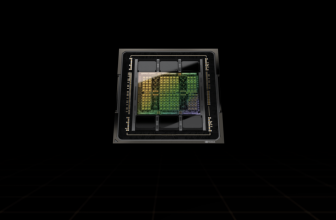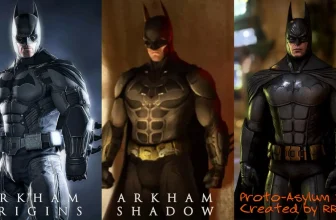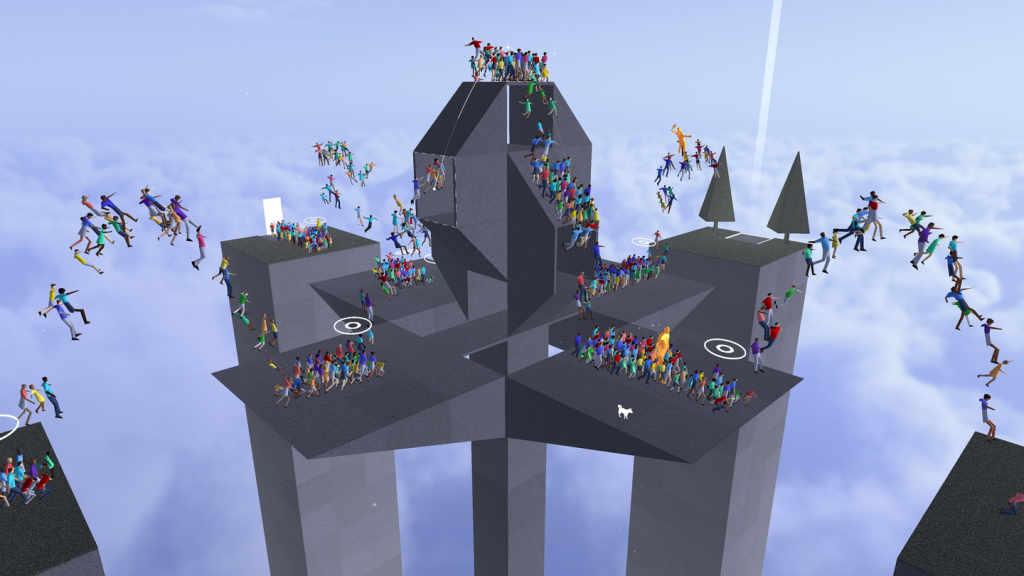
Get it on the Meta Store
Calling a game Humanity requires courage as it may seem pretentious and philosophical. It suggests the game is an intellectual exploration of human existence, adding the pressure to demonstrate substance and depth. This raises expectations instead of managing them. It’s uncertain whether the game requires a formal attire or specific accessories. Personally, I am looking forward to having fun and enjoying stimulating puzzles. Let’s see how dopamine responds.
Woof, Woof, Mankind
The game Humanity allows you to control a Shiba Inu dog and guide human beings through various levels towards the light. It shares similarities with games like Lemmings or Kartoffl. The gameplay involves leading the humans to their destination, reducing their agency to that of potatoes without much control over their actions. However, let’s not take offense on behalf of the human race, as it is widely acknowledged that we are not worth much.
When I mentioned throngs, I wasn’t exaggerating. It’s truly impressive how many humans are displayed on the screen at once, leaving a lasting impression. There seems to be an endless supply of them, with masses of humans continuously appearing, sometimes in the hundreds or even thousands. The first time I played this game on PSVR2, I thought it required the power of a PS5 to handle such a large number of animated characters. I had doubts about whether this impressive feat could be achieved on the Quest. However, the teams led by Tetsuya Mizuguchi and Yugo Nakamura have somehow managed to accomplish it. So, let me introduce you, Humanity, to the Quest. And Quest, meet the masses of human sheep being guided by a Shiba Inu.

Essentially, each level is a challenge to solve, and there are plenty of levels broken down into chapters. Some exposition between the chapters reveals the grand narrative that serves as a backdrop to all this puzzle-solving.
Your Shiba Inu possesses a set of powers that can evolve and sometimes decrease in effectiveness. You have the ability to command them to turn, jump, jump high, and even place markers that make them as light as feathers. Each level is represented by a three-dimensional grid, where you can designate certain squares with these commands, causing humans to follow them when they reach those squares. The design of this system is well-crafted and elegant. Additionally, most levels feature larger-than-life golden humans known as Goldys. These Goldys serve a similar purpose as stars, as collecting all of them in a level signifies its completion and unlocks the final level of each chapter, requiring a specific number of Goldys.
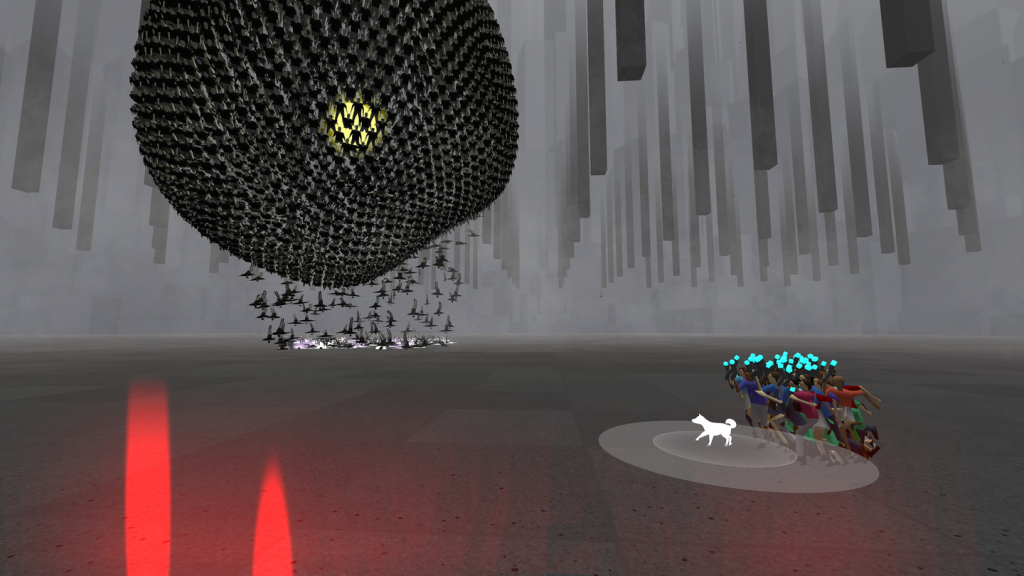
As you progress past the midway point of the game, the stakes increase, but I won’t say much about that since it would constitute a spoiler within the game’s narrative. Let’s just say that Humanity does a fantastic job of constantly evolving the gameplay to the point of breaking genre and almost making its way halfway to another genre as the game progresses. But hey, spoilers…
Spatial Computing
Humanity’s appeal is largely derived from its overall design. The menus are sophisticated, the art direction is consistently outstanding, and the controls are remarkably user-friendly. One button effortlessly toggles between commands while the other conveniently places command markers. Moreover, the right grip button enables time acceleration, and the game refrains from gratuitously penalizing players. In the event of a mistake or a desire to capture additional Goldys, the game allows for level restarts while retaining all previously placed command markers.
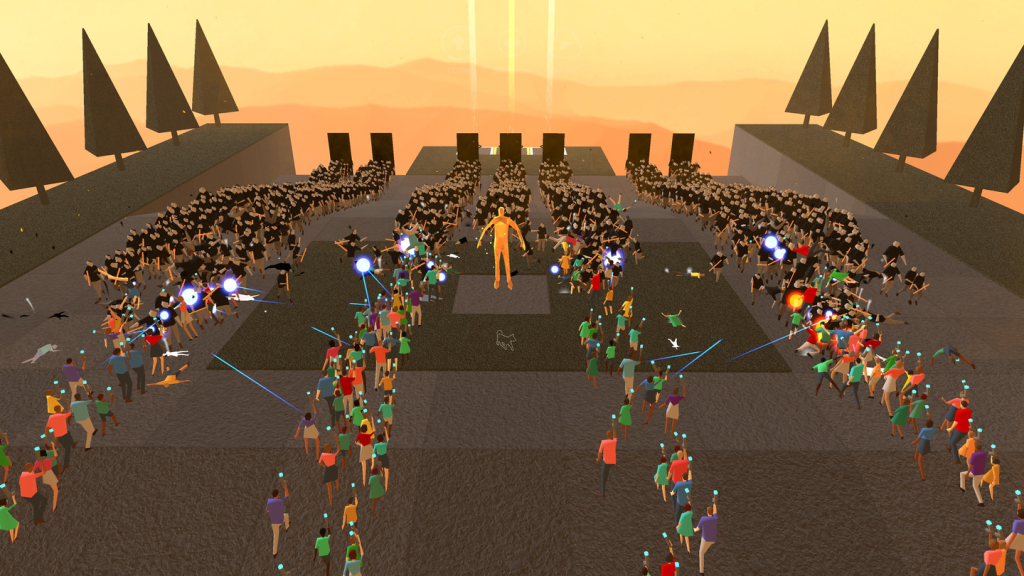
Humanity also grants you frequent rewards. Many of these rewards are in the form of different appearances for the characters, such as dressing them in 70s-style clothing, making them blocky, spherical, shiny, etc. There are also other rewards that display detailed statistics of your performance history in the game. These rewards do not affect the gameplay itself, but they enhance the overall experience and provide a sense of achievement.
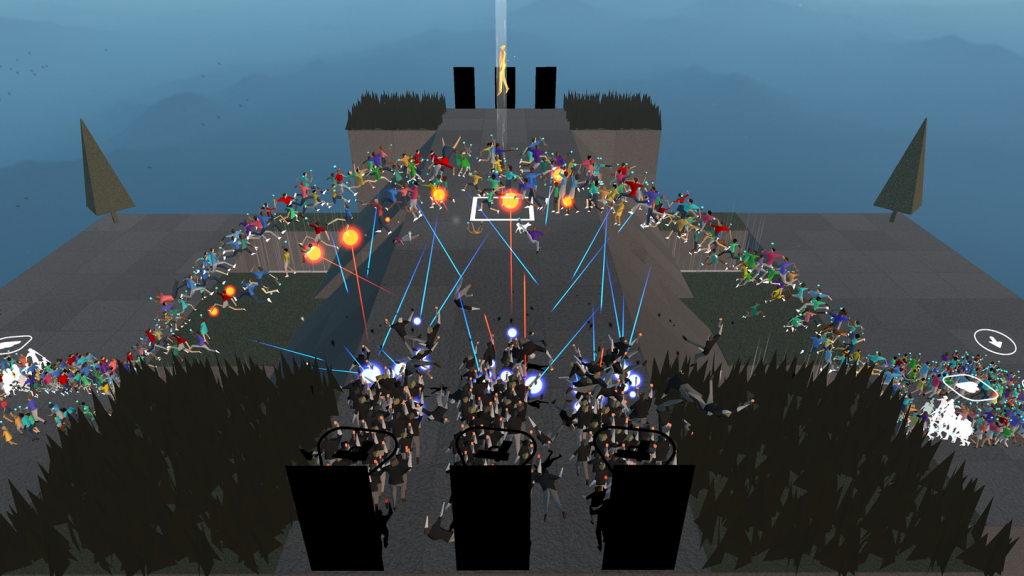
Another thing that needs to be mentioned is that Humanity has a good deal of longevity built into it; the game features a level creator, allowing players to design their own puzzles.
To Err is Human
I appreciate the unique style of humanity, although others may find it plain and dull. While the people themselves are vibrant, the overall environment is predominantly gray, which may become monotonous for some players. Personally, the only aspect of the presentation that I didn’t fully enjoy was the soundtrack. Although there are a few variations available and the option to switch between them becomes available after reaching a certain level, they all feature a similar minimalist electronica style. I comprehend that the purpose of the game’s music is to create a soothing background atmosphere, but it didn’t resonate with me personally.
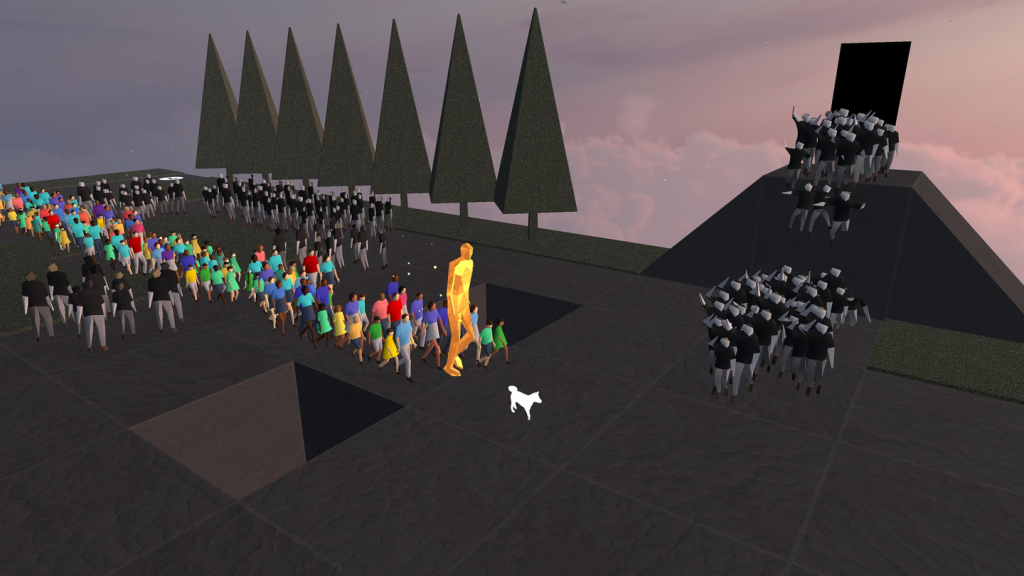
Humanity’s major concern could be its lack of justification for its presence in virtual reality (VR). Upon its release on PS5, the game offered both pancake (traditional) and VR modes, giving players the option to play in a flat format. Consequently, some individuals may opt for the conventional approach. However, for those who lack access to a console or appreciate the immersive experience of VR, this becomes a non-issue.
To Forgive, Divine
Humanity is a cryptic puzzler with a lot of atmosphere, a great set of evolving mechanics, and a wealth of levels and challenges. It has a distinctive style that minimalists will like but might seem drab to others, and its execution on Quest is excellent so long as you’re okay with a graphical downgrade from the PS5 or PSVR2 version. It straddles a fine line between being challenging and rewarding, and if you’re a fan of puzzle games, it will keep you hooked until you get to the other side of the light. The game has been nominated and won more awards than you can shake a significantly large stick at, and I can’t say it’s undeserved.




